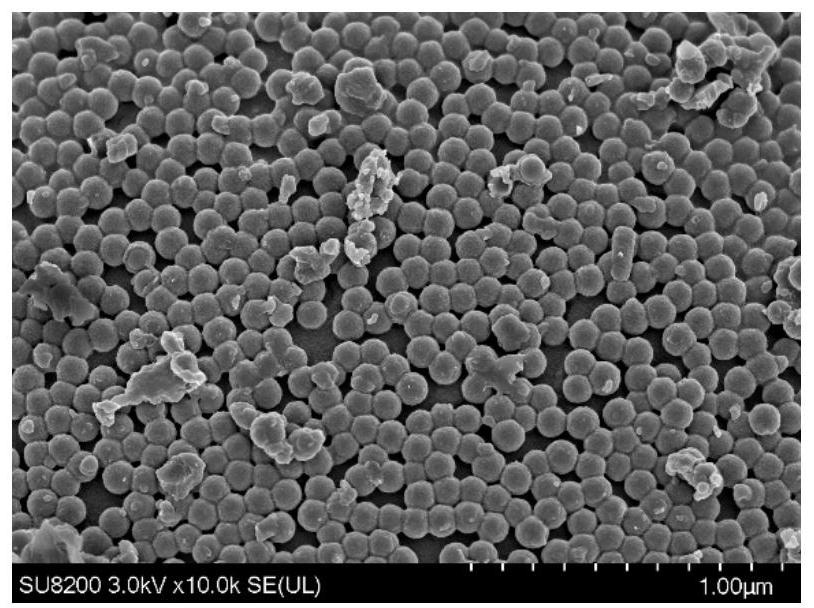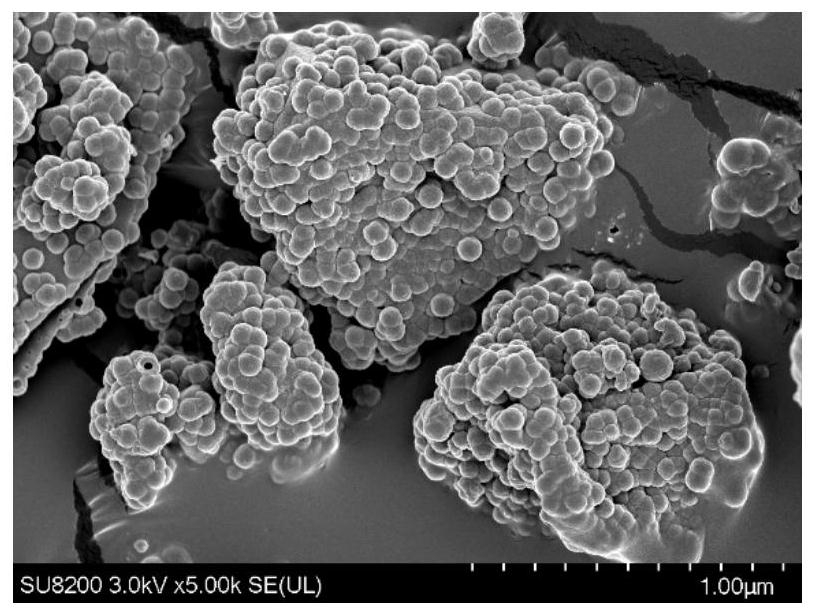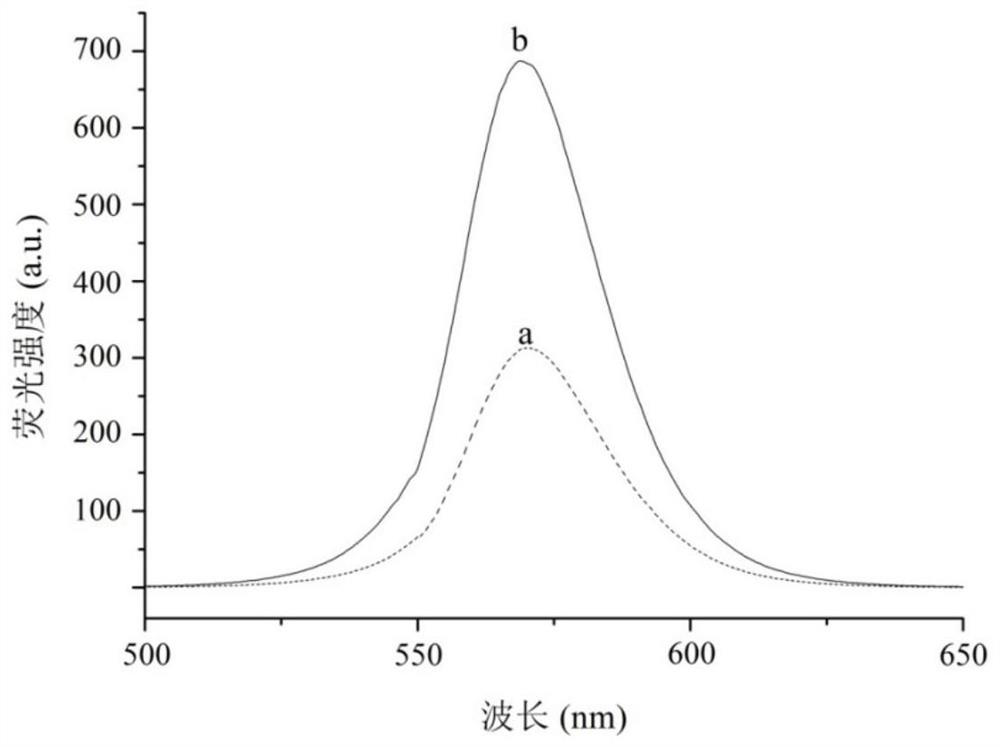Molecular imprinting fluorescence sensor for quantitative detection of alkylresorcinol, and preparation method thereof
A technology of alkyl resorcinol and fluorescent sensor, which is applied in the field of chemical analysis, can solve the problems of lack of molecularly imprinted fluorescent sensors, etc., and achieve the effects of good polymerization degree, high selectivity and good detection stability
- Summary
- Abstract
- Description
- Claims
- Application Information
AI Technical Summary
Problems solved by technology
Method used
Image
Examples
Embodiment 1
[0039](1) Add 80mg tellurium powder, 50mgNaBH to a dry three-necked flask 4 and 1.0 mL of double-distilled water, and nitrogen for 10 minutes, then put the three-necked flask into a constant temperature water bath at 60°C for heating and stirring, keep nitrogen flowing, stop the reaction after 20 minutes, and the obtained supernatant is the NaHTe aqueous solution.
[0040] (2) Preparation of CdTe quantum dots: 0.2864gCdCl 2 2.5H 2 0. 100mL of double distilled water and 0.097g of mercaptoethylamine were put into another clean three-necked flask, ultrasonically dissolved, and the pH value of the solution was adjusted to 10.2 with 0.1mol / L NaOH, and protected by nitrogen gas. Heat the temperature in a constant temperature water bath to 60°C, add the newly prepared NaHTe aqueous solution into the flask, place the flask in the water bath, remove nitrogen, and heat to reflux.
[0041] (3) Preparation of molecularly imprinted fluorescent sensor: take 2mL of CdTe quantum dots into a...
Embodiment 2
[0043] (1) Preparation of NaHTe aqueous solution: add 50.8mg tellurium powder, 60.53mg NaBH to a dry three-necked flask 4 and 10 mL of double-distilled water, and nitrogen for 20 minutes, then put the three-necked flask into a 90°C constant temperature water bath for heating and stirring, keep nitrogen flowing, stop the reaction after 40 minutes, and the obtained supernatant is the NaHTe aqueous solution.
[0044] (2) Preparation of CdTe quantum dots: 45.67mg CdCl 2 2.5H 2 0. 40 mL of double distilled water and 0.021 g of mercaptopropionic acid were put into another clean three-necked flask, ultrasonically dissolved, and the pH value of the solution was adjusted to 10.6 with 0.1 mol / L NaOH, and protected by nitrogen gas. Heat in a constant temperature water bath to 105°C, add the newly prepared NaHTe aqueous solution into the flask, place the flask in the water bath, remove nitrogen, and heat to reflux.
[0045] (3) Preparation of molecularly imprinted fluorescent sensor: Ta...
Embodiment 3
[0047] (1) Preparation of NaHTe aqueous solution: add 60mg tellurium powder, 0.113g NaBH to a dry three-necked flask 4 and 10 mL of double-distilled water, and nitrogen for 20 minutes, then put the three-necked flask into a 120°C constant temperature water bath for heating and stirring, keep nitrogen flowing, stop the reaction after 60 minutes, and the obtained supernatant is the NaHTe aqueous solution.
[0048] (2) Preparation of CdTe quantum dots: 0.228g CdCl 2 2.5H 2 0. 100 mL of double distilled water and 0.18 g of mercaptoacetic acid were put into another clean three-necked flask, ultrasonically dissolved, and the pH value of the solution was adjusted to 11.2 with 0.1 mol / L NaOH, and protected by nitrogen gas. Heat in a constant temperature water bath to 150°C, add the newly prepared NaHTe aqueous solution into the flask, place the flask in the water bath, remove nitrogen, and heat to reflux.
[0049] (3) Preparation of molecularly imprinted fluorescent sensor: Take 30 ...
PUM
 Login to View More
Login to View More Abstract
Description
Claims
Application Information
 Login to View More
Login to View More - R&D
- Intellectual Property
- Life Sciences
- Materials
- Tech Scout
- Unparalleled Data Quality
- Higher Quality Content
- 60% Fewer Hallucinations
Browse by: Latest US Patents, China's latest patents, Technical Efficacy Thesaurus, Application Domain, Technology Topic, Popular Technical Reports.
© 2025 PatSnap. All rights reserved.Legal|Privacy policy|Modern Slavery Act Transparency Statement|Sitemap|About US| Contact US: help@patsnap.com



